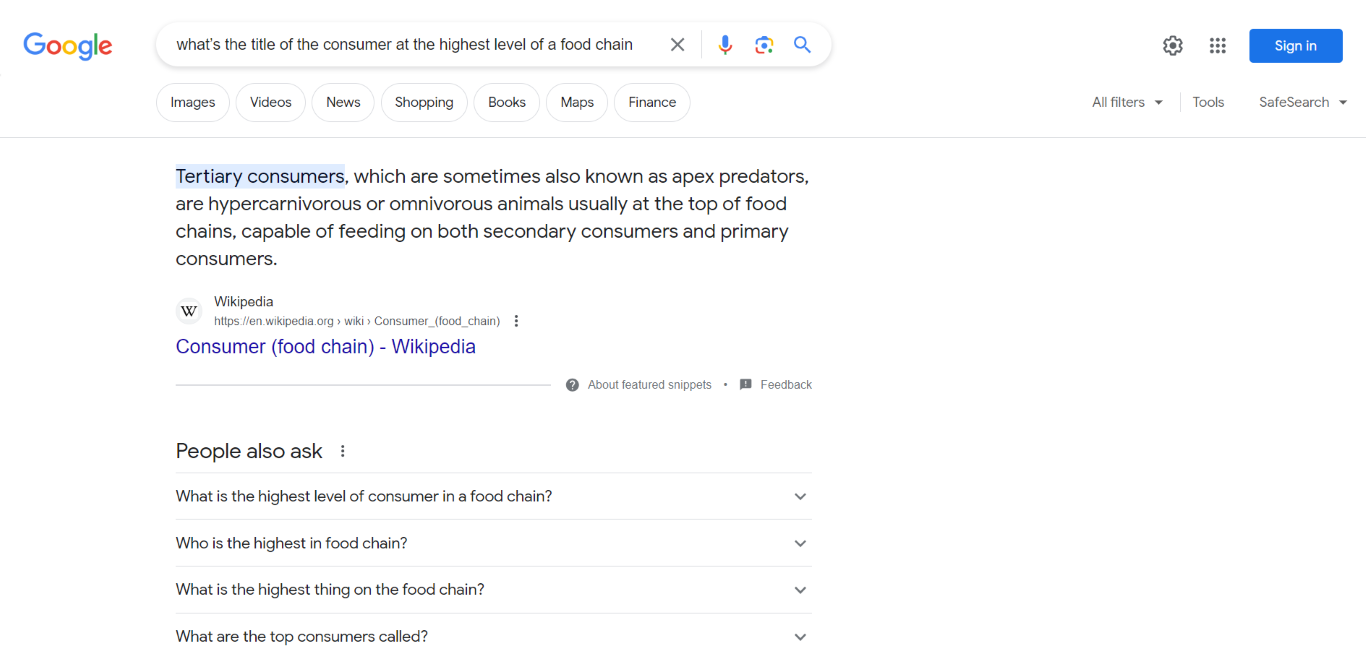What is RankBrain?
RankBrain is a machine learning algorithm that Google uses to understand the relationship between a word and the context in which it is used. Google uses RankBrain to determine the intent of a search query and present relevant results in return.
Google introduced RankBrain in 2015. Before RankBrain, Google found it difficult to understand certain search queries. For example, Google may find it challenging to understand a search query like “What’s the title of the consumer at the highest level of a food chain.”
However, with Rank Brain, Google would understand that the word “food chain” is often used to refer to animals. So, it will deduce that you’re searching for the name of the creature at the highest level of the animal food chain. In that case, it will display something like “tertiary consumers” or “apex predators”, as shown below.
